Tuo Li Xiao Du San
Tuo Li Xiao Du San
Chinese: 托里消毒散
Pinyin: Tuō Lǐ Xiāo Dú Sàn
Other names: Supporting the Interior and Dissolve Poison Powder








Tuo Li Xiao Du San
Tuo Li Xiao Du San
Chinese: 托里消毒散
Pinyin: Tuō Lǐ Xiāo Dú Sàn
Other names: Supporting the Interior and Dissolve Poison Powder
Number of ingredients: 11 herbs
Formula category: Formulas that clear internal abscesses and sores
Conditions for which it may be prescribed: MastitisBreast engorgement
- Draws out toxicity
- Expels pus from the interior
- Tonifies Qi and Blood
Source date: 1548 AD
Source book: Fine formulas for women with Annotations and Commentary
The information provided here is not a replacement for a doctor. You shouldn't use it for the purpose of self-diagnosing or self-medicating but rather so you can have a more informed discussion with a professional TCM practitioner.
Tuo Li Xiao Du San is a 11-ingredient Chinese Medicine formula with Milkvetch Roots (Huang Qi) as a principal ingredient.
Invented in 1548 AD, it belongs to the category of formulas that clear internal abscesses and sores. Its main actions are: 1) draws out toxicity and 2) expels pus from the interior.
In Chinese Medicine health conditions are thought to arise due to "disharmonies" in the body as a system. These disharmonies are called "patterns" and the very purpose of herbal formulas is to fight them in order to restore the body's harmony.
In this case Tuo Li Xiao Du San is used by TCM practitioners to fight patterns like Blow Breast (Chui Ru) or Jealous Breast (Du Ru). From a Western Medicine standpoint, such patterns can give rise to a range of conditions such as mastitis or breast engorgement for instance.
On this page, after a detailed description of each of the eleven ingredients in Tuo Li Xiao Du San, we review the patterns and conditions that Tuo Li Xiao Du San helps treat.
The eleven ingredients in Tuo Li Xiao Du San

Huang Qi is a king ingredient in Tuo Li Xiao Du San. Like the name indicates, it means it has more power than other ingredients in the formula.
1. Milkvetch Roots (Huang Qi)
Huang Qi fortifies the Spleen and tonifies Qi. For this specific formula, it is added to resolve toxins in chronic cases where there is also a Deficiency. In such cases, the body's Qi is so deficient that it cannot expel toxins and bring an attack to an end.

2. Codonopsis Roots (Dang Shen)
In general Dang Shen's main actions are as follows: "Tonifies the Spleen and Lung Qi. Assists in the secretion of Bodily Fluids."
In the context of Tuo Li Xiao Du San, it is used because it tonifies Qi.

3. Atractylodes Rhizomes (Bai Zhu)
Part used: Dried rhizome
Nature: Warm
Meridian affinity: SpleenStomach
Category: Tonic herbs for Qi Deficiency
In general Bai Zhu's main actions are as follows: "Tonifies the Spleen Qi. Fortifies the Spleen Yang and dispels Damp through urination. Tonifies Qi and stops sweating. Calms restless fetus when due to Deficiency of Spleen Qi."
In the context of Tuo Li Xiao Du San, it is used because it fortifies the Spleen and tonifies Qi to expel toxins and remove pus.
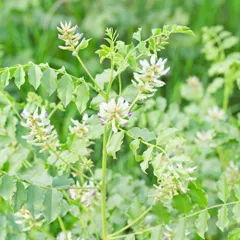
4. Liquorice (Gan Cao)
Part used: Dried root and rhizome
Nature: Neutral
Taste(s): Sweet
Meridian affinity: HeartLungSpleenStomach
Category: Tonic herbs for Qi Deficiency
In general Gan Cao's main actions are as follows: "Tonifies the Basal Qi and nourishes the Spleen Qi. Clears Heat and dispels toxicity. Moistens the Lungsexpel phlegm and stop coughing. Relieves spasms and alleviates pain. Harmonizes and moderates the effects of other herbs."
In the context of Tuo Li Xiao Du San, it is used because it harmonizes all other ingredients.
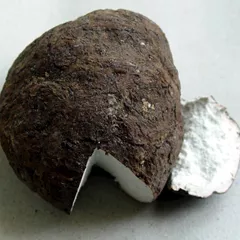
5. Poria-Cocos Mushrooms (Fu Ling)
Part used: Dried sclerotium
Nature: Neutral
Taste(s): Sweet
Meridian affinity: HeartKidneyLungSpleen
Category: Herbs that drain Dampness
In general Fu Ling's main actions are as follows: "Encourages urination and drains Dampness. Tonic to the Spleen/Stomach. Assists the Heart and calms the Spirit."
In the context of Tuo Li Xiao Du San, it is used because it removes Dampness.
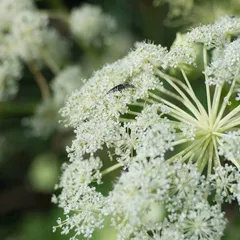
6. Angelica Roots (Bai Zhi)
In general Bai Zhi's main actions are as follows: "Relieves the Exterior and disperses Wind. Disperses Wind and Cold from the Yang Brightness channels. Relieves Wind-Damp Cold painful obstruction. Dries Dampness and pus and reduces swelling. Opens the nasal passages."
In the context of Tuo Li Xiao Du San, it is used because it opens the orifices and helps to resolve Toxin.
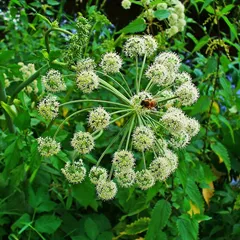
7. Dong Quai (Dang Gui)
Part used: Dried root
Nature: Warm
Meridian affinity: HeartLiverSpleen
Category: Tonic herbs for Blood Deficiency
In general Dang Gui's main actions are as follows: "Tonifies the Blood. Lubricates the Intestines. Relieve constipation. Promotes circulation and dispels Bi Pain. Reduce Dysmenorrhea and help with irregular menstruation."
In the context of Tuo Li Xiao Du San, it is used because it nourishes and invigorates Blood.

8. White Peony Roots (Bai Shao)
Part used: Dried root
Nature: Neutral
Meridian affinity: LiverSpleen
Category: Tonic herbs for Blood Deficiency
In general Bai Shao's main actions are as follows: "Tonifies the Blood and preserves the Yin. Nourishes the Liver and assists in the smooth flow of Qi. Regulates the meridians and eases the pain."
In the context of Tuo Li Xiao Du San, it is used because it nourishes and invigorates Blood.

9. Szechuan Lovage Roots (Chuan Xiong)
Part used: Dried rhizome
Nature: Warm
Taste(s): Pungent
Meridian affinity: GallbladderLiverPericardium
Category: Herbs that invigorate the Blood
In general Chuan Xiong's main actions are as follows: "Regulates and moves the Blood. Relieves Wind-Cold and pain. Circulates the Qi in the Upper Burner, relieving headaches."
In the context of Tuo Li Xiao Du San, it is used because it nourishes and invigorates Blood.
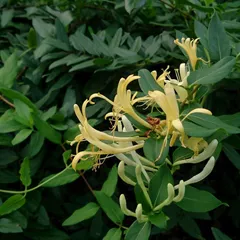
10. Honeysuckle Flowers (Jin Yin Hua)
In general Jin Yin Hua's main actions are as follows: "Clears Heat and dispels toxicity. Dispels Wind-Heat derived from an External pathogen. Expels Damp-Heat from the Lower Burner. Relieves Carbuncles."
In the context of Tuo Li Xiao Du San, it is used because it resolves Toxin and expels pus.

11. Platycodon Roots (Jie Geng)
In general Jie Geng's main actions are as follows: "Opens the Lungs and smoothes the flow of Lung Qi. Expels Phlegm and pus from the Lungs and throat, can be used for either Wind-Cold or Wind-Heat according to the other herbs in the formula. Directs the actions of other herbs to the Upper Warmer."
In the context of Tuo Li Xiao Du San, it is used because it resolves Toxin and expels pus.
Conditions and patterns for which Tuo Li Xiao Du San may be prescribed
It's important to remember that herbal formulas are meant to treat patterns, not "diseases" as understood in Western Medicine. According to Chinese Medicine patterns, which are disruptions to the body as a system, are the underlying root cause for diseases and conditions.
As such Tuo Li Xiao Du San is used by TCM practitioners to treat two different patterns which we describe below.
But before we delve into these patterns here is an overview of the Western conditions they're commonly associated with:
Again it wouldn't be correct to say "Tuo Li Xiao Du San treats mastitis" for instance. Rather, Tuo Li Xiao Du San is used to treat patterns that are sometimes the root cause behind mastitis.
Now let's look at the two patterns commonly treated with Tuo Li Xiao Du San.
Blow Breast (Chui Ru)
Pulse type(s): Weak (Ruo)
Tongue coating: Partial absence of coating
Tongue color: Pale
Symptoms: Fever Blister Breast pain Breast lumps Nippple crack Breast redness Breast nodules Breast hardness Breast infection Breast distention Breast skin crack Uneven milk supply Breast skin ichness Breast pus discharge White spots on nipples
Tuo Li Xiao Du San is sometimes prescribed by TCM practitioners to treat Blow Breast (Chui Ru). This pattern leads to symptoms such as breast pus discharge, breast pain, breast infection and breast distention. Patients with Blow Breast (Chui Ru) typically exhibit weak (Ruo) pulses as well as a pale tongue with partial absence of coating.
Jealous Breast (Du Ru)
Pulse type(s): Weak (Ruo)
Tongue coating: Partial absence of coating
Tongue color: Pale
Symptoms: Thirst Hot breast Breast pain Breast lumps Breast redness Breast hardness Breast distention Uneven milk supply
Tuo Li Xiao Du San is sometimes prescribed by TCM practitioners to treat Jealous Breast (Du Ru). This pattern leads to symptoms such as hot breast, breast hardness, breast pain and breast distention. Patients with Jealous Breast (Du Ru) typically exhibit weak (Ruo) pulses as well as a pale tongue with partial absence of coating.
Formulas similar to Tuo Li Xiao Du San
Shi Quan Da Bu Tang is 64% similar to Tuo Li Xiao Du San
Ba Zhen Yi Mu Tang is 55% similar to Tuo Li Xiao Du San
Ba Zhen Tang is 55% similar to Tuo Li Xiao Du San
Jing Jie Lian Qiao Tang is 50% similar to Tuo Li Xiao Du San
Wu Ji San is 47% similar to Tuo Li Xiao Du San
Jia Wei Xiao Yao San is 45% similar to Tuo Li Xiao Du San












